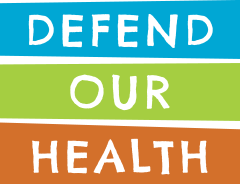Microplastics are disrupting photosynthesis and threatening our food supply
April 1, 2025 | Safe Food, Toxic-Free Products | Tags: climate change, Defend Our Health, food, microplastics, photosynthesis, pollution, Toxic Chemicals
Summary
An alarming new study published last month in the Proceedings of the National Academy of Science revealed that microplastics disrupt photosynthesis, the process plants use to make energy. This disruption could reduce the global food supply by up to 14% and put millions more people at risk of starvation.
Background
Microplastics are tiny pieces of plastic, even as small as DNA, that come from the breakdown of larger plastic. They have been found everywhere in our environment and every organ of our bodies. Plants can take up microplastics, which scientists have suspected may interfere with photosynthesis by blocking sunlight, releasing harmful chemicals, or clogging water channels. However, previous studies have found conflicting results, likely due to the complexity of different ecosystems and the variety of microplastics.
To address this, the authors pooled data from 157 different studies. They used machine learning to uncover the relationship between microplastic pollution levels and photosynthesis and how this may ultimately affect crop production.
What did they find?
The study found microplastics significantly reduce photosynthesis — roughly a 10% reduction! — in terrestrial, aquatic, and freshwater ecosystems. They also found a decrease in chlorophyll levels, which are essential for photosynthesis. The authors did this by using statistics to look at trends across all studies and with a “random forest machine learning model” (learn more here!), which was able to use the compiled data to understand how different features (ecosystem type, temperature, plant species, etc.) influenced photosynthesis.
Next, using models that can predict how global crop production is affected by chlorophyll levels, they predicted this photosynthesis loss would cause up to 360 million metric tons (MT) of crop loss per year, with particularly severe impacts on maize crops and crops in Asia. They also predicted significant loss in aquatic systems—up to 24 MT of seafood per year, which they estimate is enough protein to feed up to 123 million adults.
The authors also used their model to predict the effect of microplastic reduction. Reducing global microplastic pollution by ~13% was sufficient to decrease photosynthesis loss by 30% and save up to 115 MT of crops and 7 MT of seafood.
Why is this important?
While microplastics are already known to pose health risks to humans, this study highlights their dangerous effects on plant health and survival and the cascading consequences for our global food supply, which is already threatened by climate change. The findings underscore an urgent need to address microplastic pollution and open further questions about other consequences of photosynthesis loss, such as ecosystem balance and planet health.
